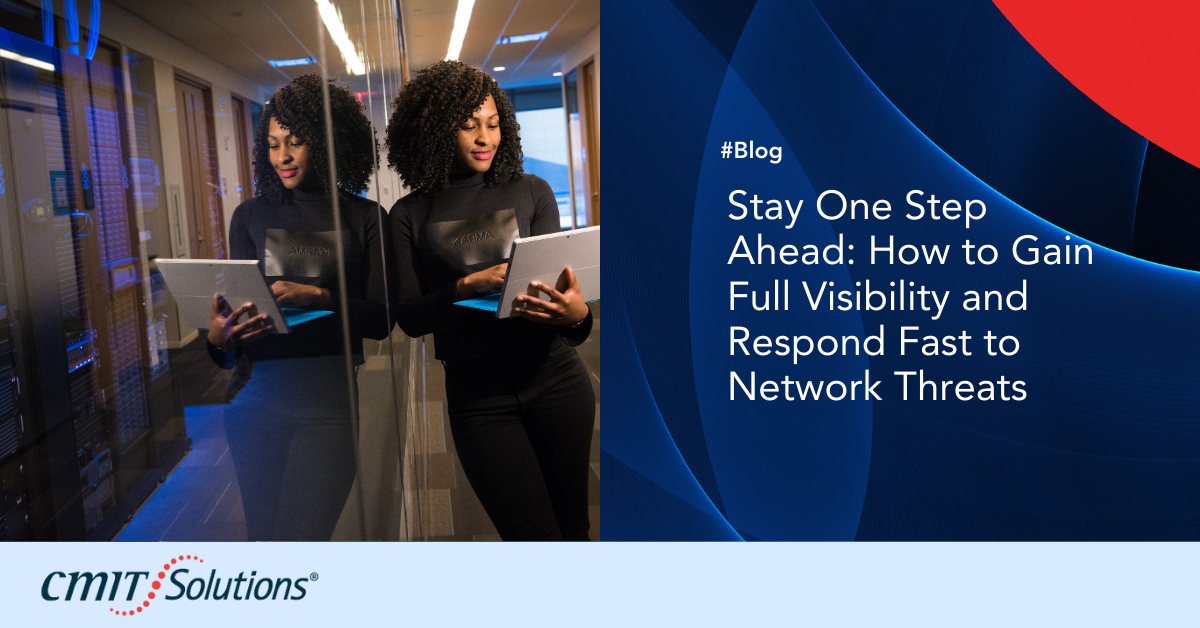Lack of network visibility remains one of the biggest cybersecurity challenges businesses face today. In a recent Gigamon study, 70% of security leaders cited blind spots as their biggest hurdle, and more than 37% admitted their existing security tools had failed to detect an active threat in the past year.
The growing complexity of hybrid work environments, cloud services, and IoT devices has significantly expanded the attack surface, making traditional security tools less effective. At the same time, cybercriminals are leveraging AI and automation to bypass conventional defenses, launching increasingly sophisticated attacks.
To keep up, organizations need real-time visibility across their entire network infrastructure. This is where network detection and response (NDR) solutions come in, offering an AI-driven approach to threat detection, automated response, and forensic analysis.
Why Network Detection and Response (NDR) is Essential
NDR solutions offer organizations the ability to monitor and analyze network traffic in real time. Unlike traditional firewalls and endpoint security tools, which rely on signature-based detection, NDR uses behavioral analytics and AI to detect both known and unknown threats.
By continuously inspecting network traffic patterns, NDR can detect anomalies, lateral movement, and suspicious behaviors—even when threats bypass traditional defenses. Businesses that incorporate multi-layered cybersecurity strategies significantly reduce their risk of data breaches and system compromise.
How NDR Identifies Threats
NDR solutions fall under the category of threat detection and response tools, alongside endpoint detection and response (EDR) and extended detection and response (XDR). However, NDR differs in its focus on network-level threats, giving security teams visibility into traffic movement between internal systems, cloud applications, and remote devices.
North-South vs. East-West Traffic Monitoring
NDR tools monitor two key types of network traffic:
- North-South Traffic: External traffic moving into and out of the network (e.g., internet traffic, VPN connections, cloud services).
- East-West Traffic: Internal traffic between devices, servers, and applications (e.g., lateral movement of malware within the network).
Traditional security tools often focus only on north-south traffic, leaving internal threats undetected. NDR tools provide complete network visibility, ensuring that threats hiding within an organization’s systems are identified and mitigated early.
Deep Packet Inspection and Encrypted Traffic Analysis
With more than 80% of network traffic now encrypted, many security tools fail to inspect potentially malicious activity within encrypted sessions. NDR solutions use deep packet inspection (DPI) and AI-powered decryption analysis to analyze traffic behavior without compromising privacy.
By integrating advanced encryption security into network defenses, businesses can detect and mitigate encrypted threats without introducing performance bottlenecks.
The Role of AI and Automation in NDR
Traditional security tools generate an overwhelming number of alerts, making it difficult for IT teams to prioritize real threats. NDR solutions leverage AI-driven behavioral analytics and machine learning to:
- Detect Subtle Anomalies – AI can recognize deviation patterns in network traffic, even if an attack mimics legitimate behavior.
- Reduce False Positives – By correlating multiple alerts, NDR filters out unnecessary notifications, allowing security teams to focus on genuine threats.
- Predict Future Threats – Predictive AI can simulate attack scenarios, helping businesses proactively strengthen their defenses.
- Automate Threat Response – NDR tools trigger automated security playbooks to block or contain threats in real time, preventing security breaches before they escalate.
Many businesses integrate NDR solutions with IT automation platforms to enhance response times and minimize human intervention.
Forensic Analysis: Learning from Cyberattacks
NDR solutions don’t just detect active threats—they also provide historical forensics capabilities, allowing security teams to reconstruct past cyberattacks and identify weak points in the network.
By reviewing log files, packet captures, and user behaviors, businesses can:
- Trace an attack’s origin and progression
- Analyze how attackers exploited vulnerabilities
- Improve future security policies and access controls
Companies implementing strong IAM (Identity & Access Management) backup strategies ensure that network forensic data remains accessible, even in the event of system-wide compromise.
How to Choose the Right NDR Solution
The NDR market is rapidly evolving, with several major vendors offering solutions integrated into broader security platforms. When evaluating NDR tools, businesses should prioritize:
1. Complete Network Visibility
An NDR solution should provide continuous monitoring of all network activity, including:
- Cloud services and SaaS applications
- Remote and hybrid work environments
- Encrypted network traffic
- IoT and unmanaged devices
Companies with secure cloud infrastructures can integrate NDR solutions with existing security frameworks for a unified security approach.
2. AI-Powered Anomaly Detection
Advanced NDR tools should leverage AI and behavioral analytics to:
- Detect zero-day threats and advanced persistent threats (APTs)
- Monitor user behaviors and login patterns for anomalies
- Correlate security alerts from multiple sources
3. Real-Time Threat Response & Automation
The ability to automatically block malicious activity is a key differentiator between basic monitoring tools and true NDR solutions. Businesses should seek NDR tools that:
- Integrate with existing security solutions (EDR, SIEM, XDR)
- Trigger automated security actions based on predefined rules
- Minimize downtime and response lag
Companies using automated IT response strategies benefit from faster containment of cyber threats.
4. Scalability and Performance Optimization
NDR tools should support growing network demands without causing latency or performance degradation. Businesses should consider solutions that:
- Handle increasing data volumes without slowing down the network
- Adapt to evolving cybersecurity threats with ongoing updates
- Offer cloud-based deployment options for hybrid environments
Conclusion: Proactive Security Starts with Full Network Visibility
Traditional security measures can no longer keep up with today’s advanced cyber threats. Without comprehensive network visibility, businesses risk delayed threat detection, costly breaches, and operational downtime.
By deploying network detection and response (NDR) solutions, organizations can:
- Gain full visibility into encrypted and internal network traffic
- Detect and mitigate zero-day threats before damage occurs
- Leverage AI-powered automation to respond in real time
- Ensure forensic-level analysis to strengthen future defenses
At CMIT Solutions of Oak Park, we specialize in advanced cybersecurity solutions that help businesses detect, prevent, and respond to evolving cyber threats.
To explore how NDR solutions can enhance your network security strategy, contact us today for a free security assessment.




